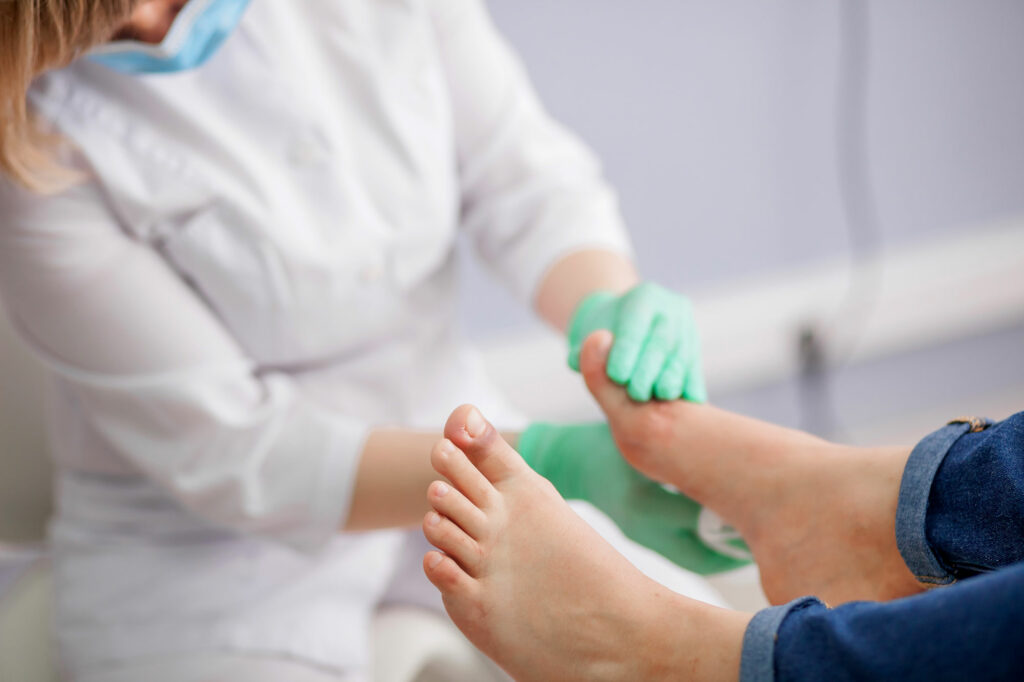Diabetes and the diabetic foot, symptoms and treatment
Diabetes mellitus is a chronic disease that occurs when the pancreas does not secrete enough insulin or the body fails to use it effectively.
Due to the effects that this disease has on the body, there are different symptoms or conditions that it can cause if it is not treated correctly, these include blindness, kidney failure, myocardial infarction, and diabetic foot, among others.
What is a diabetic foot?
The different lesions that frequently appear on the feet of people with diabetes are known as diabetic foot and can lead to serious complications such as infections, amputations, or even the death of the patient.
It appears in the patient when blood sugar levels are inadequate, together with other factors such as high blood pressure or hypercholesterolemia; this causes damage to the vessels and nerves that can trigger complications in the medium or long term.
Identify the diabetic foot: symptoms to look for
There are different common symptoms that patients who are developing diabetic foot may present, these include:
- Appearance of ulcers.
- Lack of sensation.
- Cramps.
- Tingling.
The decrease in sensitivity and poor blood circulation in the foot can lead to the appearance of an ulcer, which can become serious. These wounds are normally caused due to decreased sensation in the foot and usually appear on the sole or areas close to the bone.
Other factors can lead to the appearance of ulcers such as:
- Biomechanical alterations in the feet (bunions, bent toes, thickened nails, etc.).
- To walk barefoot.
- Old age.
- Poor glycemic control.
- Objects or seams inside the shoe.
- Use of inappropriate footwear.
Diabetic foot and its treatment
It is fundamental for every patient to prevent the appearance of this type of injury, for this:
- Go to a podiatrist for a correct nail trim.
- Due to the lack of sensation, touch the soles of the feet looking for injuries.
- Avoid wearing tight or very loose shoes.
- Wash your feet daily with warm water and neutral soap.
- Do not use alcohol or substances that can cause burns or allergic reactions.
- Frequently check that there are no wounds, ingrown nails, or color changes.
- Dry your feet properly, making sure that no moisture remains.
- Touch the tips of your toes, the sole of your foot, and your heel to feel the touch.
- Use socks without elastic or seams.
When ulcers appear, prophylaxis is the basis of treatment, but each patient is unique, so it is recommended that you follow your doctor’s instructions.
Complications in the feet of diabetic people are the main cause of amputation not related to accidents, which is why it is essential to be aware of any changes and see a doctor immediately if you notice something strange like a diabetic foot.
At the ABC Medical Center’s Diabetes Clinic we can provide you with specialized care. Contact us! Contact us!
Fuente:
https://scielo.isciii.es/scielo.php?script=sci_arttext&pid=S1134-928X2018000400197#:~:text=La%20Organizaci%C3%B3n%20Mundial%20de%20la,diferentes%20factores%20inducidos%20por%20una
https://medlineplus.gov/spanish/diabeticfoot.html
https://www.imss.gob.mx/salud-en-linea/pie-diabetico


